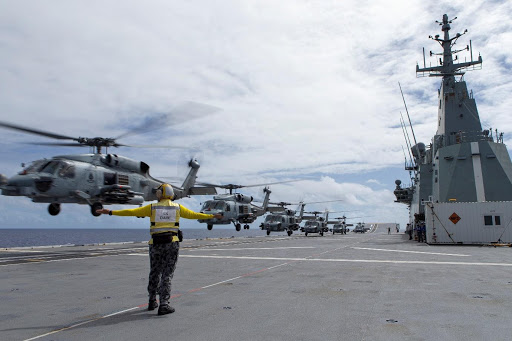Promoted by Navantia Australia
Maintaining design integrity of a naval ship through life is essential to ensure the safety and performance of the asset throughout operation and sustainment. An established sustainment engineering strategy that includes key design principles will mitigate the risks inherent with performing systems changes and updates and assure Seaworthiness, functionality, performance and safety.
Design integrity encapsulates the knowledge of the ship system from concept of operations through design evolution of the integrated product to ensure functionality, performance and safety. For a naval ship, maintaining design integrity through life is essential to ensure that the performance and safety of the asset does not degrade throughout the operation and sustainment phase.
During the acquisition phase, the role of the ship designer is well established to provide a holistic approach to design integrity. If system changes and updates are performed in a less coherent manner however, this can be dissipated.
Mitigating this risk is achievable by establishing a sustainment engineering strategy that includes the following key design principles:
Ship System Design
The approach to ship design involves the integration of systems and components aggregating to a complete ship system. There is a role for system-to-system integration such as command systems; however the overall ship integration design should be managed under the one entity. This approach assures a holistic view of design integrity through the consistent application of design intent, principles, standards and system specification for the whole of the ship through life.
Navantia Australia has built its engineering organisation to perform engineering sustainment activities in a consistent approach to that of the original designers of ship classes procured for the Royal Australian Navy (RAN). This provides coverage for the full breadth of naval ship systems design including command systems integration and ILS. All the aspects involved in design change are performed as an integrated function whilst engaging specialist sub-system designers in line with the original system developers. This is underpinned by the appointment of a single class Design Authority, who has the responsibility to assure design integrity through a consistent application of design processes and responsibility.
Requirements Definition
The requirements set for a naval ship class is a combination of function and performance requirements, design standards/specifications and Classification/Statutory rules generally documented in a Mission System Specification. These specifications also contain technical descriptions of the system inherited from its Reference Ship origin rather than ‘pure’ requirements. The requirements set evolves during the acquisition design and is linked integrally to the class design basis. In determining the relevant requirements for an engineering change in-service, it is important to identify and clearly understand the extant requirements in addition to those applicable to the new equipment or system.
Design integrity also requires the identification and selective application of standards and rules in the context of a naval ship. Judicious assessment of the invoked standards for design change must be performed in a consistent framework.
Design Analysis
The ship integration process relies on extensive interface management between sub-system and equipment. During the acquisition phase, the ship designer prepares equipment specifications that invoke all of the relevant environmental and ship interface requirements to provide consistent design integrity. That systems and equipment are selected and mandated, perhaps in the interests of cross fleet commonality, foreign sales, commercial or other reasons, is a challenge in sustainment. In some cases, the procurement agency does not have all the class design requirements. This can also lead to a division of system responsibility adding a risk of interface gaps.
Human engineering is an understated design process that influences the integrity of the design. The broader definition of human engineering includes the ship living environment (e.g. noise, air quality, and illumination), workflows, equipment operation and maintenance ergonomics. Arrangement design in engineering change needs to be cognisant of the design basis and the principles of equipment location to ensure an effective user environment.
Seaworthiness and Safety
The introduction of the Seaworthiness framework provides an opportunity to enhance design integrity through life. The Activity and Condition Compliance based Obligations provides a structured framework to perform and monitor engineering outcomes of the ships. As the ACCOs are a functionally based hierarchy, the top-down ship design process, to ensure integrity at each goal level, supports them.
Safety in design is integral throughout the design process and considers a multitude of factors such as design standards, material selection, system analysis, ergonomics, survivability and RMA analysis. The result of these design activities form a basis of a safe design as an integral part of the design package. Performing safety assessments is a valuable tool to review the design through a hazard assessment lens but does not replace the integral design processes.
Configuration Control
One of the key tenets of technical integrity is the alignment of the design, ILS (maintenance and operation) and the ship product triangulated as a common configuration. The ship and support documentation contains an accurate translation of the design basis and its associated assurance. During acquisition, this is achieved at a single point at Ship Acceptance where the design is baselined to align with the ship and ILS. This process is more challenging in the sustainment phase, but the principle of maintaining the ship design baseline is essential to ensure technical integrity.
Navantia is performing an effective technology transfer to consolidate a sovereign Australian design capability to support the Navantia classes introduced into the RAN fleet. Through the application of key engineering principles, and maintaining the design heritage throughout sustainment, this results in maintaining design integrity through life and mitigating the associated risks.
Author: Peter Goodin, Chief Engineer, Navantia Australia
 Login
Login






